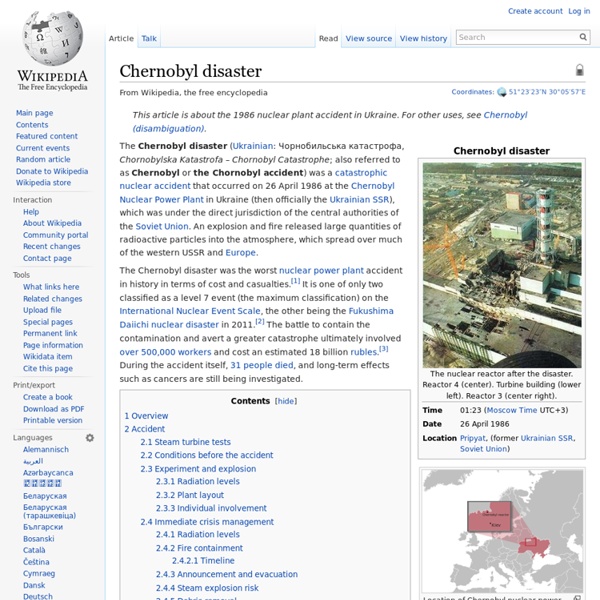Chernobyl disaster

Fossils Fuels vs. Renewable Energy
Energy’s Future Today The sun is the ultimate source of energy for our planet. Its energy is found in fossil fuels as well as all living things. There is a great deal of information and enthusiasm today about the development and increased production of our global energy needs from alternative energy sources. Alternative energy is an interesting concept when you think about it. The problem is fossil fuels are non-renewable. In fact, the earliest known fossil fuel deposits are from the Cambrian Period about 500 million years ago, way before the dinosaurs emerged onto the scene. Despite the promise of alternative energy sources — more appropriately called renewable energy, collectively they provide only about 7 percent of the world’s energy needs (Source: Energy Information Agency). Dams are a major source of hydroelectric energy, such as the Hoover Dam on the Colorado River (pictured). The Fossil Fuel Dilemma Fossil fuels exist, and they provide a valuable service. Conclusions Did You Know?
26 years on: helping Chernobyl's children
A botched reactor safety test set off the worst nuclear disaster in history in 1986About 5 million people remain in what have been termed 'contaminated territories'Kathy Ryan: "People are still being affected by the social and economic fallout."CCI helps children from contaminated areas who are negatively impacted (CNN) -- Twenty-six years ago this week, a botched reactor safety test in a corner of what was then the Soviet Union set off the worst nuclear accident in history. The radiation effects of the April 26, 1986, reactor explosion were about 400 times more potent than the bomb dropped on Hiroshima during World War II, and nearly 14 times greater than the disaster last year at the Fukushima plant in Japan. Fast forward to today, and even in the exclusion zone, plants have re-grown, animals are flourishing and Chernobyl has been opened to tourists. But Chernobyl refuses to be relegated to the past. 2011: Photographer documents Chernobyl Research funds were scarce. Reports by the U.N.
Solving the Energy Crisis | New Compass
— It is our feeling that until we put the pieces together where the consumer of energy is a producer of energy, we are not going to create a truly sustainable future, says David Morris, vice president of the thirty-five year old US-based Institute for Local Self Reliance. Morris has been an advocate of a decentralized, renewable energy system and a fierce critic of centralized energy models. In this interview he provides the arguments for why the energy crisis will have to be solved at the local level and why energy generation should be democratized. You have been very critical of large-scale, centralized, renewable energy facilities. — In the United States, political, business and environmental leaders are aggressively promoting a centralized renewable energy path. From a national perspective of a nation, this makes sense. Many environmental leaders support this dynamic because the end result is replacing fossil fuels with renewable energy resources. — Yes it does.
Related:
Related:



